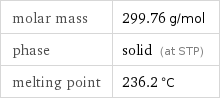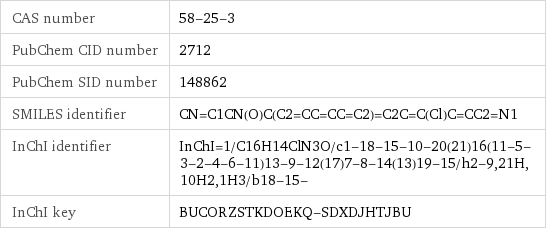Input interpretation

chlordiazepoxide
Chemical names and formulas

formula | C_16H_14ClN_3O name | chlordiazepoxide IUPAC name | 7-chloro-4-hydroxy-N-methyl-5-phenyl-3H-1, 4-benzodiazepin-2-imine mass fractions | C (carbon) 64.1% | Cl (chlorine) 11.8% | H (hydrogen) 4.71% | N (nitrogen) 14% | O (oxygen) 5.34%
Lewis structure

Draw the Lewis structure of chlordiazepoxide. Start by drawing the overall structure of the molecule, ignoring potential double and triple bonds: Count the total valence electrons of the carbon (n_C, val = 4), chlorine (n_Cl, val = 7), hydrogen (n_H, val = 1), nitrogen (n_N, val = 5), and oxygen (n_O, val = 6) atoms: 16 n_C, val + n_Cl, val + 14 n_H, val + 3 n_N, val + n_O, val = 106 Calculate the number of electrons needed to completely fill the valence shells for carbon (n_C, full = 8), chlorine (n_Cl, full = 8), hydrogen (n_H, full = 2), nitrogen (n_N, full = 8), and oxygen (n_O, full = 8): 16 n_C, full + n_Cl, full + 14 n_H, full + 3 n_N, full + n_O, full = 196 Subtracting these two numbers shows that 196 - 106 = 90 bonding electrons are needed. Each bond has two electrons, so in addition to the 37 bonds already present in the diagram add 8 bonds. To minimize formal charge nitrogen wants 3 bonds and carbon wants 4 bonds. Identify the atoms that want additional bonds and the number of electrons remaining on each atom: Fill in the 8 bonds by pairing electrons between adjacent highlighted atoms. Note that the six atom ring is aromatic, so that the single and double bonds may be rearranged: Answer: | |
Basic properties

molar mass | 299.76 g/mol phase | solid (at STP) melting point | 236.2 °C
Units

Hydrophobicity and permeability properties

experimental LogP hydrophobicity | 1.7 predicted LogP hydrophobicity | 2.98 predicted LogS | -3.8
Drug interactions

cimetidine | clozapine | ethotoin | fluconazole | fosphenytoin | indinavir | itraconazole | kava | ketoconazole | mephenytoin | nelfinavir | omeprazole | phenytoin | ritonavir | saquinavir | voriconazole (total: 16)
Basic drug properties

approval status | approved | illicit | small molecule drug categories | anesthesia adjuvant | anti-anxiety agent | benzodiazepine | gaba modulator | hypnotics and sedative dosage forms | oral: capsule

brand names | A-poxide | abboxide | apo-chlordiazepoxide | balance | CD 2 | CDO | CDP | chloradiazepoxide | chlordiazachel | chlordiazepoxid | chlordiazepoxide base | chlordiazepoxide HCl | chlordiazepoxidum | chloridazepoxide | chloridiazepide | chloridiazepoxide | chlorodiazepoxide | chlozepid | clopoxide | clordiazepossido | contol | control | decacil | eden | elenium | helogaphen | ifibrium | kalmocaps | librax | librelease | librinin | libritabs | librium | limbitrol | limbitrol Ds | lygen | menrium | mesural | methaminodiazepoxide | mildmen | multum | napoton | napton | novo-poxide | psicosan | radepur | risolid | silibrin | tropium | viopsicol
Chemical identifiers

CAS number | 58-25-3 PubChem CID number | 2712 PubChem SID number | 148862 SMILES identifier | CN=C1CN(O)C(C2=CC=CC=C2)=C2C=C(Cl)C=CC2=N1 InChI identifier | InChI=1/C16H14ClN3O/c1-18-15-10-20(21)16(11-5-3-2-4-6-11)13-9-12(17)7-8-14(13)19-15/h2-9, 21H, 10H2, 1H3/b18-15- InChI key | BUCORZSTKDOEKQ-SDXDJHTJBU